Incorporating Iron into Your Diet: A Comprehensive Guide

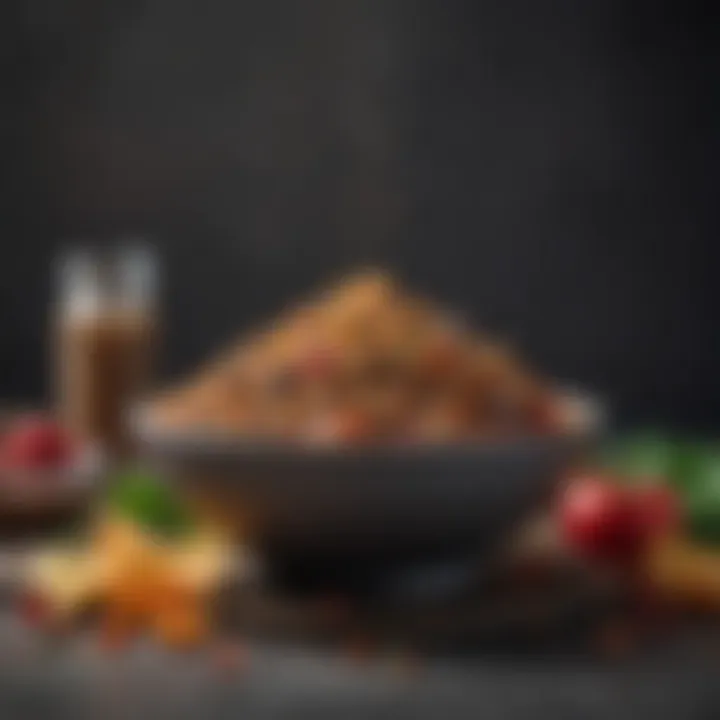
Intro
Iron is an essential mineral that plays a vital role in various bodily functions, impacting health in significant ways. It assists in transporting oxygen throughout the body, contributes to energy production, and is necessary for immune health. Understanding how to incorporate iron into your diet is crucial, as many individuals do not meet their daily requirements. This guide will delve deep into the sources of iron, absorption factors, and provide practical strategies for enhancing iron intake.
Recipe Overview
- Recipe Name and Description: One of the excellent ways to boost iron intake is through a recipe like Iron-Fortified Spinach and Lentil Salad. This dish combines iron-rich spinach and lentils, making it a nutritious and delicious option that can be enjoyed as a main or side dish.
- Cuisine Type: This recipe can be classified under Mediterranean cuisine due to the use of fresh greens, legumes, and simple dressings that characterize this culinary tradition.
Ingredients List
- Detailed Ingredient Breakdown:
- Substitutions for Dietary Needs:
- Spinach (raw or cooked): rich in non-heme iron.
- Lentils (cooked): an excellent source of iron, fiber, and protein.
- Cherry tomatoes: add freshness and a dose of vitamin C, which helps with iron absorption.
- Olive oil: healthy fat that compliments the salad's flavors.
- Lemon juice: enhances the taste while providing vitamin C.
- Feta cheese (optional): adds flavor and a creamy texture, while also contributing calcium.
- For a vegan option, omit feta cheese or replace it with avocado slices for creaminess.
- If lentils are not preferred, chickpeas could serve as an alternate protein source.
- Those avoiding gluten should be mindful of any bread or crackers that may accompany the dish.
Iron Types
Heme iron is the type found in animal products, such as red meat and poultry. Non-heme iron is present in plant-based foods, including beans, lentils, and leafy greens. Understanding these differences is essential. Heme iron is more easily absorbed by the body. In contrast, non-heme iron’s absorption can be influenced by other dietary components.
Enhancing Iron Absorption
To maximize iron absorption, consider the following:
- Pair non-heme iron sources with vitamin C-rich foods like oranges or bell peppers.
- Avoid consuming calcium-rich foods or drinks during meals containing iron, as calcium can inhibit absorption.
End
Incorporating iron into your diet is not only possible but can be enjoyable. Focusing on sources of both heme and non-heme iron can help in achieving and maintaining healthy iron levels. Balancing diets with proper planning can lead to better health outcomes.
Understanding the Importance of Iron
Iron plays a crucial role in various bodily functions. It is essential for producing hemoglobin, the protein in red blood cells that carries oxygen throughout the body. This oxygen transport is vital for energy production, cellular function, and overall vitality. In addition to hemoglobin, iron is also a component of myoglobin, which helps muscles store oxygen. Thus, maintaining adequate iron levels supports both physical performance and general health.
One significant aspect to highlight is that iron contributes to cognitive function. Sufficient iron levels can impact attention span, memory, and problem-solving skills. This makes it especially important for children, teenagers, and pregnant women, as their iron needs tend to be higher due to growth, development, and increased blood volume.
Moreover, iron is involved in immune function. It helps in the proliferation of immune cells and participates in the defense against pathogens. Low iron levels can compromise the immune response and make individuals more susceptible to various infections.
Consequently, understanding the importance of iron is critical not only for personal health but also for achieving optimal physical and mental capabilities. The goal of this article is to equip you with knowledge about iron, its dietary sources, and strategies for maintaining healthy levels.
The Role of Iron in the Body
Iron serves multiple vital functions within the body. Primarily, it is associated with hemoglobin formation. Hemoglobin binds to oxygen in the lungs and transports it to tissues. Iron ensures this system runs efficiently. Consequently, low iron levels can lead to fatigue and decreased stamina, impacting everyday activities.
Additionally, iron supports enzyme activity. Many enzymes, critical for metabolic processes, rely on iron as a cofactor. Without sufficient iron, these enzymatic functions may become impaired. This can result in disruptions in important processes, including DNA synthesis and cellular respiration, leading to broader health implications.
Overall, iron is not merely a nutrient; it is a cornerstone of bodily function that supports both life and health.
Consequences of Iron Deficiency
Iron deficiency may lead to various health concerns. The most prevalent consequence is iron-deficiency anemia, a condition characterized by insufficient red blood cells due to inadequate iron for hemoglobin production. Symptoms can include fatigue, weakness, dizziness, and pale skin. If left untreated, it can have more serious health ramifications.
Other consequences of low iron levels include compromised immune function. As mentioned before, without adequate iron, the body's defense mechanism can weaken, making infections more likely. Cognitive function may also suffer, with issues arising in attention, focus, and overall mental clarity.
Furthermore, prolonged iron deficiency may affect individuals' quality of life. Simple tasks may become burdensome, affecting not only physical health but emotional well-being as well. This reinforces the need for awareness around iron levels and dietary considerations to prevent deficiency.
Who is at Risk for Iron Deficiency?
Certain populations are particularly vulnerable to iron deficiency. Pregnant women experience an increase in blood volume, which raises their iron requirements. If they do not adjust their diet accordingly, they can easily fall into deficiency.
Children and adolescents also have higher needs during growth spurts. Their developing bodies require more iron than is typically found in a standard diet. Vegetarian and vegan individuals might face a higher risk too, as plant-based sources of iron are less bioavailable compared to animal sources.
Finally, those with certain medical conditions, such as chronic blood loss from menstruation or gastrointestinal bleeding, may find themselves at an elevated risk. Likewise, those who have undergone surgeries involving the gastrointestinal tract might also experience challenges in iron absorption.
Understanding these risk factors can facilitate proactive measures to ensure adequate dietary intake of iron.
Types of Iron: Heme vs. Non-Heme
Iron is an essential mineral that plays multiple roles in the body. Understanding the different types of iron and their properties is crucial for those looking to improve their iron intake. The two main categories are heme and non-heme iron. They differ in their sources, absorption rates, and overall benefits to health. Recognizing this distinction helps individuals make informed dietary choices.
Characteristics of Heme Iron
Heme iron is primarily found in animal-based foods, particularly in red meat, poultry, and fish. Unlike non-heme iron, it is derived from hemoglobin and myoglobin, proteins found in blood and muscle. The structure of heme iron allows for better absorption in the human digestive system. This property makes heme iron particularly beneficial for individuals who may need a higher intake due to factors like pregnancy or heavy physical activity.
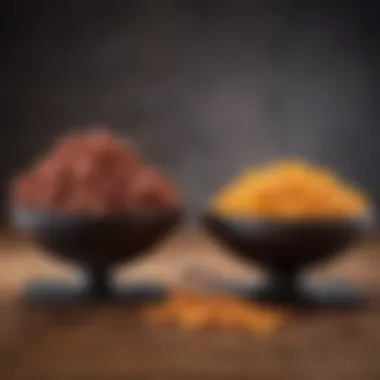
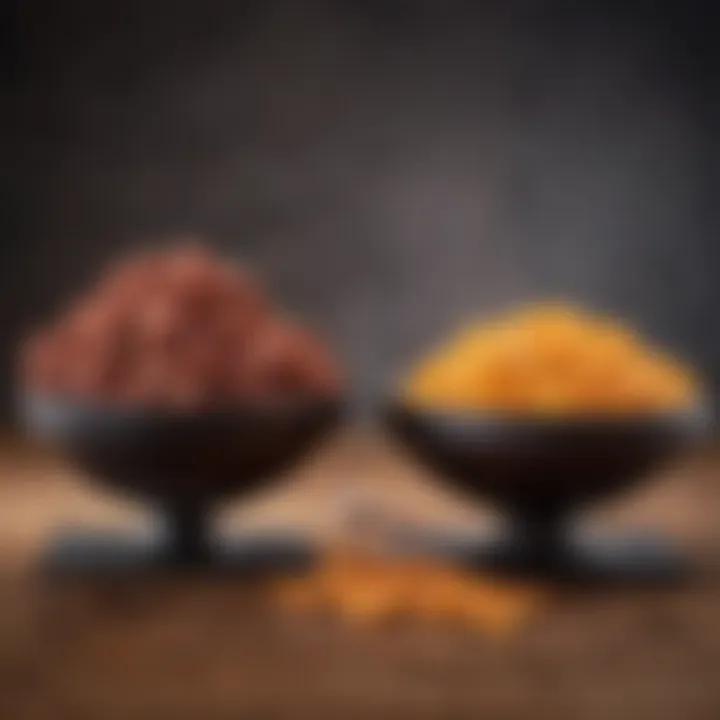
One notable aspect of heme iron is that it represents approximately 15-25% of the total iron in meat products, alongside a smaller percentage in seafood. Since the absorption rate of heme iron can reach up to 35%, it significantly contributes to meeting daily iron needs.
Non-Heme Iron Sources
Non-heme iron, on the other hand, is found predominantly in plant-based foods. It is present in legumes, nuts, seeds, fortified cereals, and leafy greens. Although these sources are crucial, non-heme iron's absorption rate ranges from only 2% to 20%, depending on various factors such as the presence of other food components.
When plant-based diets are considered, it’s essential to incorporate a variety of non-heme iron sources to achieve sufficient iron levels. Foods like lentils, chickpeas, quinoa, and spinach are excellent additions. Since non-heme iron can be less bioavailable, combining these sources with vitamin C-rich foods can enhance absorption, a strategy that many health-conscious individuals utilize.
Comparing Absorption Rates
The differences in absorption rates between heme and non-heme iron cannot be overlooked. Heme iron stands out due to its significantly higher absorption potential, often making it the preferred choice for those struggling with iron deficiency.
Several factors influence the absorption of non-heme iron. Dietary inhibitors such as calcium, polyphenols found in tea, and phytates present in some grains can hinder its absorption. In contrast, the presence of vitamin C dramatically enhances the uptake of non-heme iron. It is critical to strategize meal plans to optimize iron intake according to these absorption dynamics.
In summary, understanding the distinctions between heme and non-heme iron is vital for constructing an effective dietary plan. Here are key takeaways:
- Heme Iron: Better absorption, found in animal products.
- Non-Heme Iron: Predominantly in plant foods, affected by several dietary components.
By recognizing how each type affects absorption, individuals can tailor their dietary choices more effectively to address their iron needs.
Identifying Rich Sources of Iron
Identifying rich sources of iron is essential for anyone looking to optimize their dietary iron intake. Iron is a crucial nutrient that supports numerous bodily functions, including oxygen transport, immune function, and energy metabolism. In this section, we will explore various animal-based and plant-based sources of iron as well as fortified foods and supplements. Understanding these sources will enable individuals to make informed choices about their iron-rich diet.
Animal-Based Sources
Animal-based sources of iron are typically rich in heme iron, which is easily absorbed by the body. This makes them vital for those seeking to improve their iron levels.
Red Meat
Red meat, such as beef and lamb, is one of the most prominent sources of heme iron. A key characteristic of red meat is its high concentration of iron, which aids in addressing deficiencies effectively. This is why many nutritionists recommend including red meat in a balanced diet.
One unique feature of red meat is its versatility in cooking. It can be prepared in numerous ways, from grilling to slow-cooking, catering to different tastes. However, excessive consumption can lead to other health issues, so moderation is key.
Poultry
Poultry, including chicken and turkey, is another significant source of heme iron. It is known for being leaner than red meat and has a lower fat content. This makes poultry a popular choice for health-conscious individuals. The meat's versatility allows it to fit into various diets and cuisines easily.
A distinct advantage of poultry is its abundant presence in everyday meals, making it accessible for most people. However, compared to red meat, its iron content is slightly lower, requiring balance with other iron sources.
Fish
Fish is also a valuable source of heme iron, with varieties such as tuna and salmon leading in iron content. The key characteristic of fish is its omega-3 fatty acids, promoting overall health alongside iron intake. This dual benefit can contribute positively to dietary objectives.
One notable feature of fish is its easy preparation and quick cooking times. However, certain fish may contain environmental toxins, so it is wise to choose sustainably sourced options for both health and environmental concerns.
Plant-Based Sources
While plant-based sources provide non-heme iron, which is less easily absorbed, they offer essential nutrients and various health benefits as well.
Legumes
Legumes, including lentils, chickpeas, and beans, are excellent sources of non-heme iron. They are recognized for their high protein content and fiber, making them a staple for vegetarians and vegans. Legumes play a crucial role in providing not only iron but also other vital nutrients, contributing to a balanced diet.
The unique feature of legumes is their versatility in dishes like soups, salads, and stews, making them easy to incorporate throughout the week. However, their non-heme iron may require pairing with vitamin C-rich foods to facilitate absorption.
Nuts and Seeds
Nuts and seeds, such as pumpkin seeds and almonds, are beneficial sources of iron as well. They stand out due to their healthy fats and protein content, which can enhance satiety. This makes them ideal snacks for those looking to boost their iron intake between meals.
One unique characteristic of nuts and seeds is their long shelf life, allowing for convenient storage. However, while they contribute to overall iron intake, moderation is important due to their high-calorie density.
Leafy Greens
Leafy greens like spinach, kale, and swiss chard provide non-heme iron and are excellent for overall health. They are loaded with minerals, vitamins, and antioxidants, making them an essential part of a nutritious diet. Their high volume means they can be consumed in large quantities with minimal calories.
One advantage of leafy greens is their low environmental impact, making them a sustainable option. However, their iron content is often paired with oxalates, which can inhibit absorption, stressing the need for thoughtful meal planning.
Fortified Foods and Supplements
Fortified foods and iron supplements provide additional avenues for increasing iron levels. Many breakfast cereals have added iron, making them a quick and easy option for enhancing iron intake. Supplements, such as ferrous sulfate, can also help those with diagnosed deficiencies.
Fortified foods often target specific populations, like pregnant women and children, ensuring they meet dietary needs. The unique aspect of supplements is that they offer concentrated doses of iron, yet they should be taken under guidance to avoid excessive intake.
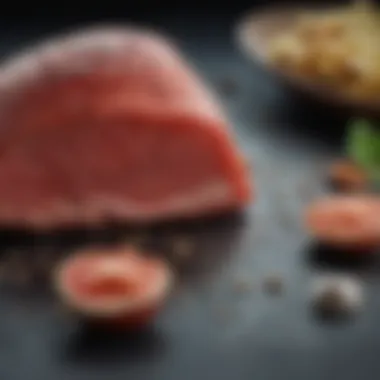
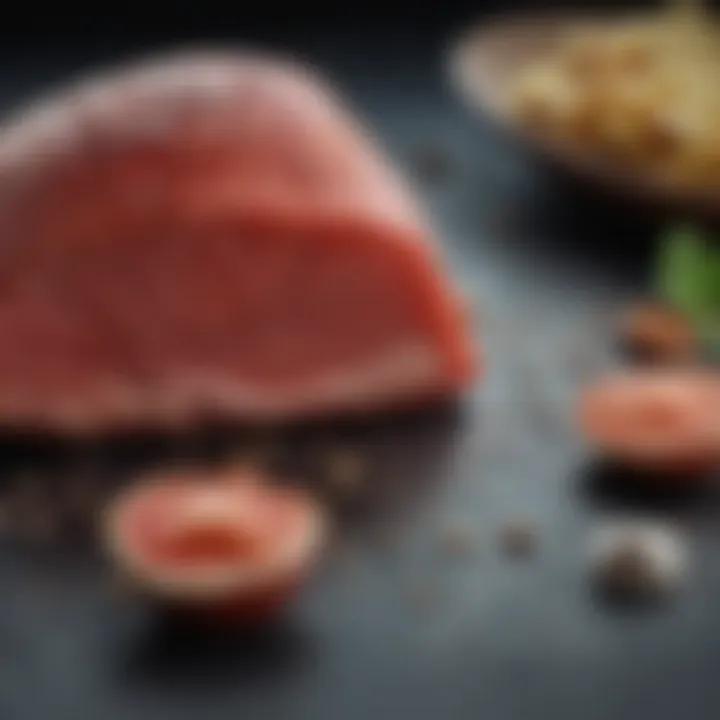
Enhancing Iron Absorption
When adding iron to the diet, understanding how to enhance its absorption is crucial. Not all iron consumed is absorbed equally. Factors like food pairing, presence of certain nutrients, and inhibitors can significantly alter how much iron the body can use. Improving iron absorption helps in maximizing the benefits derived from iron-rich foods, making it essential for maintaining adequate levels in the body.
Vitamin and Iron Intake
Vitamin C plays a vital role in enhancing the absorption of non-heme iron, which is primarily found in plant-based sources. When consumed alongside foods rich in iron, vitamin C can reduce the effects of inhibitors and assist in converting iron into a more absorbable form.
For instance, a glass of orange juice with an iron-fortified cereal can boost absorption rates. It is important to include vitamin C-rich foods like citrus fruits, bell peppers, and broccoli in diets, especially for those relying on non-heme iron sources.
Avoiding Inhibitors
Certain compounds can inhibit iron absorption. Being aware of these can help in planning meal combinations more effectively.
Calcium
Calcium, while essential for bone health, can inhibit iron absorption when consumed in large amounts at the same time as iron-rich foods. This is significant for individuals who consume dairy products frequently. The key characteristic of calcium is its ability to bind with iron, limiting the quantity that enters the bloodstream. While it should not be entirely avoided, spacing out calcium-rich foods from iron sources can be beneficial for better iron absorption.
Polyphenols
Polyphenols are compounds found in various plant-based foods like tea, coffee, and some fruits. They can hinder iron absorption by binding with iron in the digestive tract. The unique feature of polyphenols is their antioxidant properties, which offer health benefits. However, individuals aiming for increased iron levels should consume these beverages away from meals, particularly during iron-rich meal times.
Phytates
Phytates are found in whole grains, legumes, and some nuts and seeds. They can also bind iron, reducing its availability for absorption. While phytates can be viewed negatively, they have other health benefits, such as being high in fiber. Cooking methods like soaking, sprouting, or fermenting can reduce phytate levels. Therefore, being mindful of phytates while simultaneously employing these techniques can enhance iron availability in plant-based diets.
Meal Pairing Strategies
By knowledge of how to pair meals effectively, individuals can optimize their iron intake. Combining non-heme iron sources with vitamin C-rich foods provides an effective strategy to enhance absorption. Avoiding the consumption of inhibitors alongside iron-rich meals leads to better iron utilization.
In summary, understanding the nuances of iron absorption is crucial for anyone aiming to improve their nutritional health. With careful planning and meal strategies, one can substantially increase iron intake efficiency.
Planning Your Iron-Rich Diet
Creating a diet rich in iron is crucial for maintaining optimal health. This section will focus on how to effectively plan your meals to ensure adequate iron intake. A well-thought-out diet not only meets your iron needs but also contributes to overall nutritional health. By understanding your dietary options, you can minimize the risk of iron deficiency while maximizing your health benefits.
Sample Meal Plans for Different Diets
Omnivorous
The omnivorous diet includes a variety of food groups, such as meats, dairy, fruits, and vegetables. This diversity allows for strong iron intake through both heme and non-heme sources. For example, a typical day might include scrambled eggs and spinach for breakfast, a beef stir-fry for lunch, and roasted chicken with broccoli for dinner.
The key characteristic of an omnivorous diet is the inclusion of meat, which is a rich source of heme iron. This type of iron is more readily absorbed by the body compared to non-heme iron from plant sources. Because of this, omnivorous meal plans are often considered advantageous for those needing to boost iron levels, making it an effective choice for this article.
However, one disadvantage could be the higher consumption of saturated fats if not balanced well. Thus, careful selection of lean meats and plenty of vegetables remains essential.
Vegetarian
A vegetarian diet excludes meat but can still provide sufficient iron through various plant-based sources. Common foods include lentils, chickpeas, and fortified cereals. A good sample meal plan might include oatmeal with nuts for breakfast, a bean salad for lunch, and a vegetable stir-fry with tofu for dinner.
The beneficial aspect of a vegetarian diet is the emphasis on whole foods, which often include high fiber and numerous nutrients. Additionally, it reduces the risk of certain chronic diseases. The unique feature here lies in the diversity of legumes and grains that can provide the iron needed without relying on animal products.
Nevertheless, vegetarians must be cautious about iron absorption. Non-heme iron is less easily absorbed, so it’s important to combine sources of vitamin C, like bell peppers or citrus, with iron-rich meals to enhance uptake.
Vegan
The vegan diet eliminates all animal products, which poses a challenge for iron intake. However, a well-planned vegan diet can still be iron-rich. A daily menu could include smoothies with spinach and almond milk for breakfast, quinoa and black bean salad for lunch, and a chickpea curry for dinner.
Key characteristic of the vegan diet is the complete avoidance of heme iron, relying solely on non-heme sources. This can be a beneficial approach for ethical and environmental reasons.
Yet, this diet could be disadvantageous if one does not plan carefully. Unique feature is the reliance on alternatives such as fortified foods and understanding how to pair foods strategically for better iron absorption, since non-heme iron is significantly less bioavailable than heme iron.
Incorporating Iron into Daily Meals
Including iron in daily meals is not just about having iron-rich foods. It involves being strategic with meal pairing and preparation. One effective way is to plan meals around iron sources while avoiding inhibitors. For example, adding bell peppers to your lentil soup not only boosts flavor but also vitamin C content which enhances iron absorption. Including a variety of delicious foods will keep your diet interesting and enjoyable, making your iron-rich meal planning sustainable.
Cooking Techniques that Preserve Iron Content
When cooking, some methods can lead to iron loss in food. Steaming or sautéing vegetables can help retain iron content better than boiling. Furthermore, cast iron cookware can actually enrich food with iron, making it a sensible choice for those looking to increase their intake.
Using techniques that respect the nutrient content of your food can enhance the iron you are consuming while also maximizing flavor and variety. Ensuring that you employ simple and effective cooking methods can solidify the dietary plans in place.
Monitoring Your Iron Levels
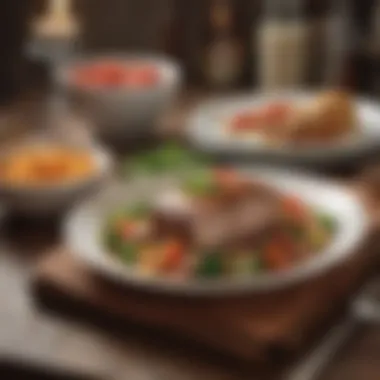
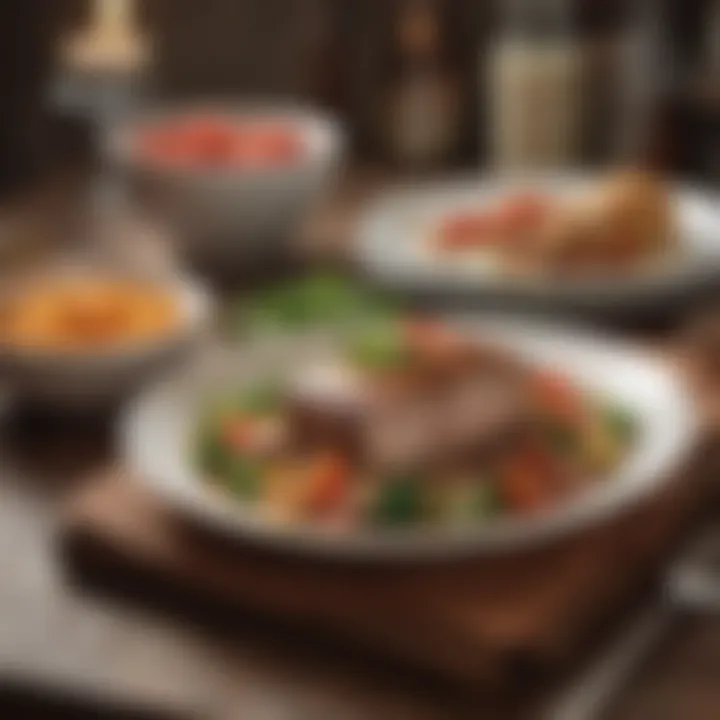
Monitoring your iron levels is crucial for maintaining overall health. Iron deficiency can lead to numerous health problems, such as anemia, fatigue, and a weakened immune system. Conversely, too much iron can cause toxicity and related complications. This makes the balance of iron intake essential for well-being.
Recognizing Symptoms of Iron Deficiency
Identifying the signs of iron deficiency early is important. Common symptoms include:
- Fatigue: A lack of iron often leads to reduced energy levels.
- Pale Skin: Skin may appear lighter due to decreased hemoglobin.
- Shortness of Breath: Activities may feel more tiring.
- Dizziness: Frequent lightheadedness could occur.
These symptoms warrant prompt action. If you notice any of them, it may be time to take a closer look at your dietary iron intake.
Testing for Iron Levels
Testing for iron levels typically involves blood tests. The most common tests measure:
- Serum Ferritin: This indicates stored iron in the body.
- Serum Iron: Measures the amount of iron in the blood.
- Total Iron Binding Capacity (TIBC): This shows how well transferrin, a protein that transports iron, is working.
These tests provide a clearer picture of your iron status. Consistent testing is vital, especially for individuals at risk of deficiency or overload.
Consulting Healthcare Professionals
Regular consultations with healthcare professionals should be an integral part of monitoring your iron levels. They can:
- Recommend appropriate tests based on symptoms and dietary habits.
- Provide personalized advice on managing iron intake.
- Guide on safe supplementation if needed.
Seeking experts' help ensures a balanced approach to iron intake and overall health management.
Regular monitoring of iron levels can significantly affect health outcomes, making it a vital practice for individuals concerned about their nutritional status.
Potential Risks of Excess Iron
Excess iron in the body can lead to serious health implications. While iron is essential for various bodily functions, it is crucial to maintain balance. Both deficiency and overload can create health challenges. Understanding the concept of iron overload helps in recognizing when to monitor and adjust dietary iron intake.
Understanding Iron Overload
Iron overload occurs when the body accumulates too much iron. It can happen through genetic disorders such as hemochromatosis, where the body absorbs excessive iron from food. Other factors include frequent blood transfusions and high iron supplementation. When iron levels rise beyond normal, it can deposit in organs, leading to potential damage. Over time, organs such as the liver, heart, and pancreas may become affected.
Signs of Iron Toxicity
Identifying symptoms of iron toxicity is vital for early intervention. Some common signs include:
- Fatigue and weakness
- Joint pain
- Abdominal pain
- Liver dysfunction
- Changes in skin color, often a grayish hue
Severe cases may lead to life-threatening conditions, such as liver cirrhosis or heart failure. Awareness of these symptoms can encourage timely medical consultation.
"It is important to find the right balance in iron intake to prevent both deficiency and excess, ensuring optimal health."
Managing Iron Intake Carefully
Careful management of iron consumption can prevent overload. Here are a few strategies:
- Regular Screenings: For individuals at risk, routine blood tests can help monitor iron levels.
- Limit Supplementation: Use iron supplements only under medical supervision.
- Diverse Diet: A varied diet can often provide sufficient iron without excess. Incorporating both heme and non-heme sources allows flexibility in iron intake.
- Avoid Excessive Red Meat: Red meat is high in heme iron. While beneficial in moderation, overconsumption can lead to higher iron levels.
In summary, being aware of the potential risks associated with excess iron is as crucial as understanding its importance. Monitoring intake and responding to the body's messages aids in maintaining health.
Culmination: The Path to a Balanced Iron Intake
An iron-balanced diet helps in optimizing energy levels and reducing fatigue. This can enhance both physical and cognitive performance. Individuals leading active lifestyles, professionals, and students can all gain from proper iron intake.
Empowerment through Nutrition
Empowerment through nutrition lies in the ability to make informed choices. By understanding different sources of iron, whether they are heme or non-heme, one can tailor a diet specific to personal needs.
Key Strategies Include:
- Diversifying Food Options: Incorporating a variety of iron-rich foods ensures a more balanced intake. Consuming red meat for heme iron, supplemented by beans and spinach for non-heme iron can be beneficial.
- Enhancing Absorption: Pairing iron-rich foods with vitamin C sources can further enhance absorption. For example, having citrus fruits or bell peppers alongside a beef stir-fry could promote better iron utilization in the body.
- Awareness of Inhibitors: Recognizing foods that inhibit iron absorption is vital. Foods high in calcium, phytates, and polyphenols, when consumed excessively alongside iron-rich foods, can hinder absorption. Therefore, meal timing should be considered.
"A keen understanding of nutrition fosters empowerment, enabling individuals to take charge of their health."
By adopting these strategies, one can navigate the complexities of iron intake, bolstering overall nutrition.
Sustaining Healthy Iron Levels Over Time
Sustaining healthy iron levels requires ongoing attention and adjustments. Regular monitoring of iron statuses through diet, lifestyle changes, and professional advice ensures long-term well-being.
Important Considerations:
- Regular Check-ups: Periodic blood tests can help determine if your iron levels are within a healthy range.
- Diet Adjustments: Based on iron levels, dietary adjustments might be necessary. For some, increasing iron-rich food intake may be required, while others may need to limit it to avoid overload.
- Healthcare Consultation: Engaging healthcare professionals for personalized advice maintains the right balance and prevents iron-related health issues.
In summary, managing iron intake is a dynamic process that adapts to personal health needs. By utilizing the knowledge available in this comprehensive guide, individuals can work towards maintaining adequate iron levels for optimal health.















